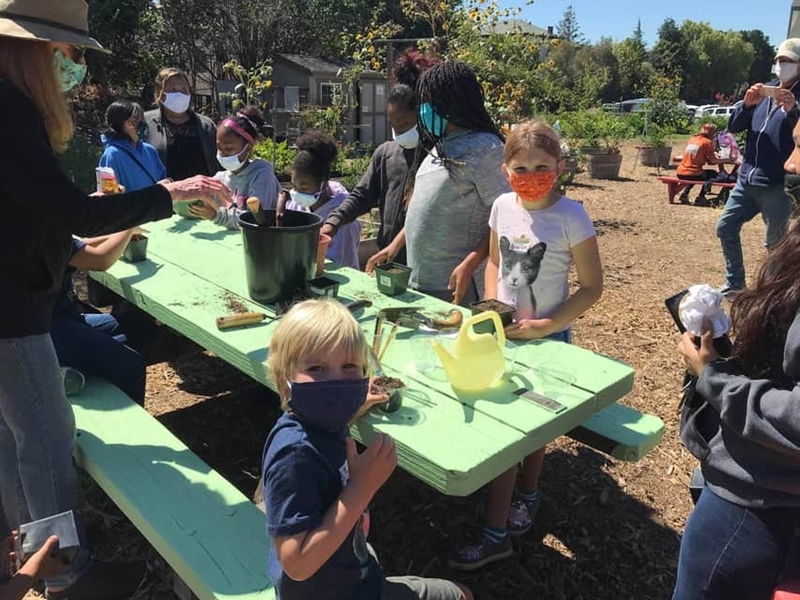Wild-Caught Salmon with Green Onion Gremolata & Seasonal Vegetables
Recipe by Wyatt Brege, Executive Chef at The Barn & Pantry
This recipe is based on the ingredients received in The Barn & Pantry’s First Bounty of the County meal prep kit. This is a great gluten- and dairy-free dish that not only tastes great but makes for a great meal at a semi-formal dinner party! This dish will be featured at The Barn & Pantry this fall as a new dinner menu item.
Ingredients:
1 bunch Red Spring Onions with tops
2 each Sweet Potato (yams)
1 bunch Garlic Chives
1 each Garlic Bulb
1 pint Shishito Peppers
2 oz Eatwell Rosemary Salt
8 oz French Green Lentils, dry
2 each Wild Caught Salmon Filet Cutlets
Green Onion Gremolata:
1 bunch Large Green Onion Tops, roughly chopped
1 bunch Garlic Chives
4-5 cloves Garlic Cloves
3 each Lemons, with zest
1 Tbsp Rosemary Salt
1 Tbsp Black Pepper
1 Cup Extra Virgin Olive Oil
In a blender, puree all ingredients until smooth. Add more olive oil if a looser sauce is desired. This base sauce is also great with crackers, bread and on pizza!
Cooking the Dish:
- In a small sauce pot, bring 1 cup lentils to a simmer with 2 cups of salted vegetable broth or water and cover. Cook for roughly 20-25 minutes until tender.
- In a 4 quart sauce pot, bring 2 quarts of water to a boil. Wash and peel the sweet potatoes, then dice into large cubes and pitch into the boiling water for 10-12 minutes. Do not overcook the sweet potatoes. When the potatoes are almost tender, remove from heat, then drain and discard the water.
- Slice the red onion bulbs into rings; remove the seeds from the shishito peppers by rolling them on a cutting board with your hand, then remove the stem and shake out seeds into a bowl, then cut the peppers into large rings, roughly finger thickness.
- Meanwhile, season the salmon filets with the rosemary salt and fresh cracked black pepper on both sides.
- Bring two large saute pans to high heat. Poor 1-2 Tbsp of olive oil into each one. Laying away from you, place the salmon in one pan skin side down — it’s important for your pan to be hot here, otherwise the salmon will stick.
- In the second saute pan, blister the peppers and onions for 1-2 minutes. Season, then add the cooked lentils and sweet potatoes and toss for two minutes.
- Flip the salmon after 2-3 minutes. Note: With tongs, you can get a good purchase on the salmon since the top half is still raw. Grasp the filet, and shake gently to free the filet from the pan. Lower the heat to medium after one minute, then cook for 5-7 minutes depending on your desired cooking temperature.
- Plate! (It doesn’t hurt to drizzle a little more olive oil over the salmon, of course.)
Chef’s Notes:
- I personally enjoy this dish with a little raw butter in the lentil-vegetable blend.
- For the gremolata, get creative! Add parsley, swiss chard or arugula greens to increase the green color and flavor. I used green lemons (Sept, NorCal) because the citrus was available (and no seeds!). I have used pomelos and grapefruit in substitute of the lemons in the past, making an even better sauce.
- This dish pairs well with Syrah, Pinot Noir or a Buttery Chardonnay, and the salmon is interchangeable with any other ocean white fish, especially sea bass.

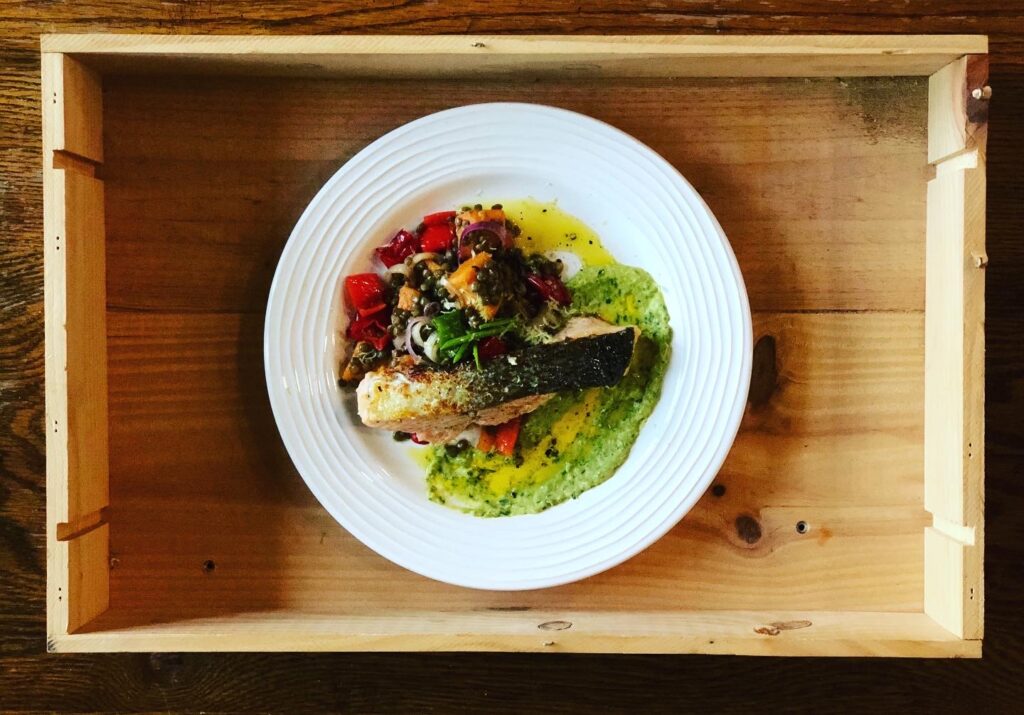
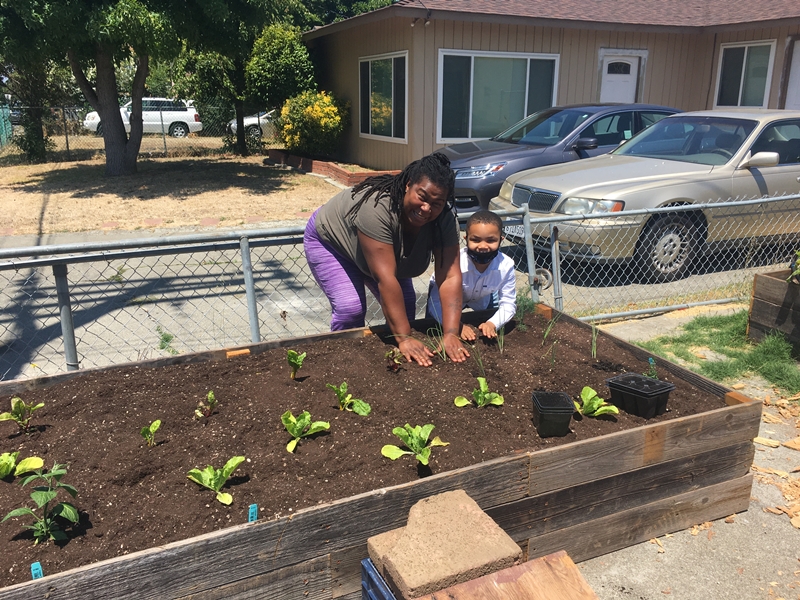

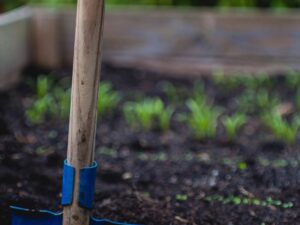
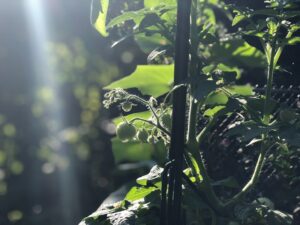



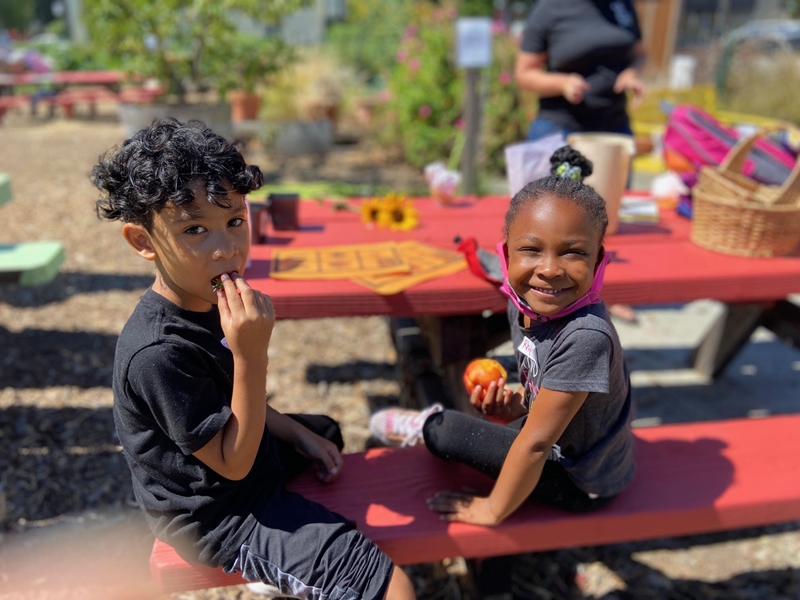
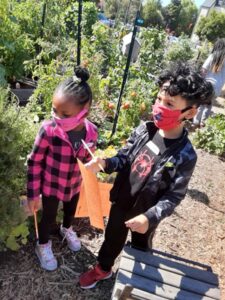 Bright orange ribbons rippled in the morning breeze identifying the ready garden plots as eager young hunters assembled to make their way through maze of Avant Garden. With yellow cards for ticking off their discoveries in one hand and bags to retrieve goodies in the other, 12 masked explorers between the ages of 5 and 11 gathered, in a COVID-19-compliant manner, on a sunny July day to escape the confines of pandemic restrictions and have some plain old outdoor fun. Raised garden beds chockful of tomatoes, cucumbers, zucchini, and yellow squash and the larger Avant share plot scattered with Halloween-sized orange pumpkins and red peppers, were fair game for the young hunters.
Bright orange ribbons rippled in the morning breeze identifying the ready garden plots as eager young hunters assembled to make their way through maze of Avant Garden. With yellow cards for ticking off their discoveries in one hand and bags to retrieve goodies in the other, 12 masked explorers between the ages of 5 and 11 gathered, in a COVID-19-compliant manner, on a sunny July day to escape the confines of pandemic restrictions and have some plain old outdoor fun. Raised garden beds chockful of tomatoes, cucumbers, zucchini, and yellow squash and the larger Avant share plot scattered with Halloween-sized orange pumpkins and red peppers, were fair game for the young hunters.